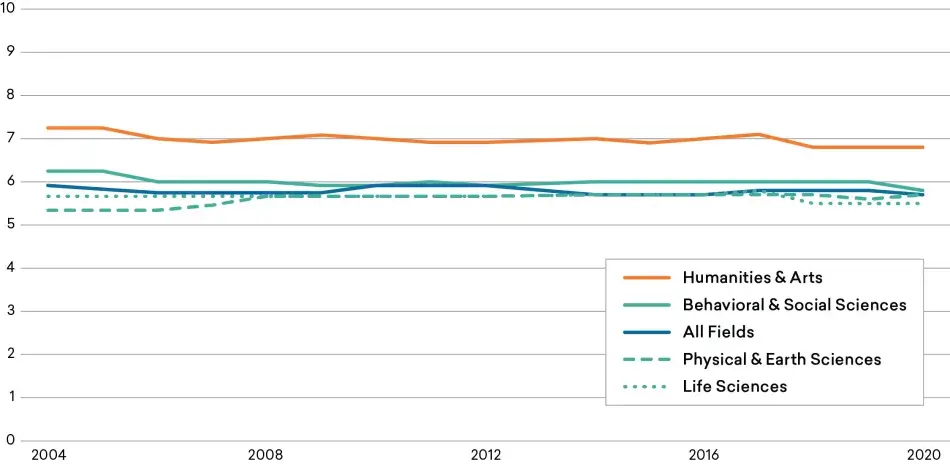Median Number of Years from Start of Doctoral Program to Receipt of Degree, by Academic Field, 2004–2020
Median Number of Years from Start of Doctoral Program to Receipt of Degree, by Academic Field, 2004–2020

Little information is available about the amount of time spent in humanities master’s degree programs or how many do not finish their studies. For students earning a PhD, however, the federal government does gather information about the number of years to completion of a program. In each year from 2004 to 2020, the median for those who finished a doctoral degree was just under six years among PhD recipients generally, but the median among those earning humanities and arts degrees (data are not available for each field separately) is a year or more longer than in most other fields. Humanities PhDs have consistently taken longer than doctorate seekers in any other field, though the time to earn a doctorate in the humanities fell modestly from 2004 to 2020 (from 7.2 years to 6.8 years).8